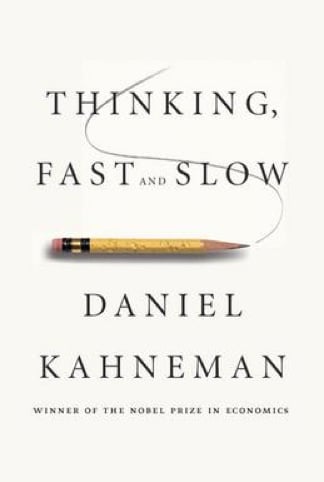5 Benefits of Implementing Work Management

Daniel Kanheman won the Nobel Prize for Economics, at least partially for his research proving that us homo sapiens have two modes of thought: System One thinking and System Two thinking. Do you know which one your business is running on?
System One is ‘fast,’ intuitive thinking which often happens automatically. System Two is ‘slow’ thinking, which requires more effort and tackles tougher problems. Think of the difference between answering the questions “What is two times four” and “What is thirty-seven times twelve” – or “What are our goals for this week” and “How are our goals for today affecting our goals for this year.”
If your company is focused only on task and project management, you may be leaning too heavily on System One thinking: focused on the things right in front of you, but missing out on the bigger picture provided by System Two thinking. This is one way to think about the difference between task/project management and work management, and here are five reasons not to miss out on the latter.
The Important vs The Urgent
“Most of us spend too much time on what is urgent and not enough time on what is important.” – Stephen R. Covey

If the man who wrote ‘The 7 Habits of Highly Effective People’ knows one thing, it’s the difference between the things you need to do today, and the things you need to do to grow your business. With a full inbox it’s easy to get the two confused.
Various things need to be managed at work; from day to day tasks (reminders, alarms, checklists, etc) all the way up to a company’s big picture goals and execution. Focusing only on the former is System One thinking.
Each level of focus takes different tools to get right, and organizations have recently been enjoying the benefits of focusing on the bigger picture of work management (System Two thinking), on top of the nitty gritty of task and project management.
Big-Picture Motivation
Without access to the big picture, (your organization’s quarterly goals, annual plan, or BHAG), workers may feel like the character in the beloved children’s book ‘The Little Prince,’ who spends all day, every day, counting the stars. When asked why:
“I administer them,” replied the businessman. “I count them and recount them. It is difficult…I write the number of my stars on a little paper. And then I put this paper in a drawer and lock it with a key.”
In the real world, few people would be motivated to count stars endlessly without knowing the point of that piece of paper in the drawer. Task and project management may help you count the stars, but work management lets everyone know why you’re counting them, and how they connect to the bigger picture, improving both morale and output.

Working ON your business, not IN your business
Similarly, many organizations are seeing the benefit of employees having a 30,000-foot view of their long-term business needs. When possible, this allows them to create their own targets and metrics to move the whole company forward, not just their individual corner of it, as well as making sure the right people are involved in the right projects at the right time.
It also frees up time for management to continue working on that Big Picture, knowing that tasks and projects are being taken care of.
For those concerned about over-managing, working on the business in this way actually leads to macro, not micro management: giving workers a final destination, and letting them use their ingenuity and know-how to get there, is one of the most rewarding feelings for all involved.
Such transparency also allows ideas to come from throughout the company, avoiding the dangers of departmental silos of information and imagination. Google allows employees to spend 20% of their time following their own ideas, and knowing the tech company’s overarching goals has resulted in some incredible advances, from AdSense to Gmail.
From Metrics to SMART/FAST growth goals
By now, everyone knows how important it is to measure metrics. But knowing which metrics to measure is one of the toughest tasks in business.
Michael Lewis’s groundbreaking book (and later Brad Pitt movie) ‘Moneyball’ helped baseball teams to realize that they had been measuring the wrong things. When it came to finding the right players to move their teams (specifically, runners) forward, scouts had traditionally been blinded by batting average, without realizing that this didn’t correlate with the ultimate goal: scoring a run by getting a player on base.
Many businesses have been slow to learn the message: focus on the desired goal, and set priorities to get there, rather than just obsessing over the lagging indicators of revenue, profit margin, etc.
That’s why leading business coaches today, such as Verne Harnish, recommend getting your metrics just right using frameworks such as SMART or FAST growth goals: Frequently discussed, Ambitious, Specific and Transparent. This ensures Type 2 thinking filters down to anyone who creates goals in your organization.
Reinforcing Great Business Practices
Finally, a good work management structure reinforces regular communication rhythms, keeps the right metrics front and centre, and shares an aligned strategy, all things which short-term projects don’t necessarily do.
Your teams or departments may be great at getting their work done, but they could be siloed and wasting valuable time and resources, duplicating work or seeing opportunities slip between the cracks. By meeting regularly, members of different teams are kept up to date with the bigger picture, maximizing resources and allowing for constant recalibration to events, both internal and external.
Final Word
There is a multitude of task and project management software out there to choose from, and you may already have found the right one for you. But focusing solely on the here and now, however successful you may be at it, can lead you to neglect the bigger picture. Work management can help by separating the urgent from the important; motivating your team by giving them the big picture; helping you work on your business, rather than just in it; setting the right growth goals; and establishing and reinforcing valuable business practices.
Post by Doron Klemer





